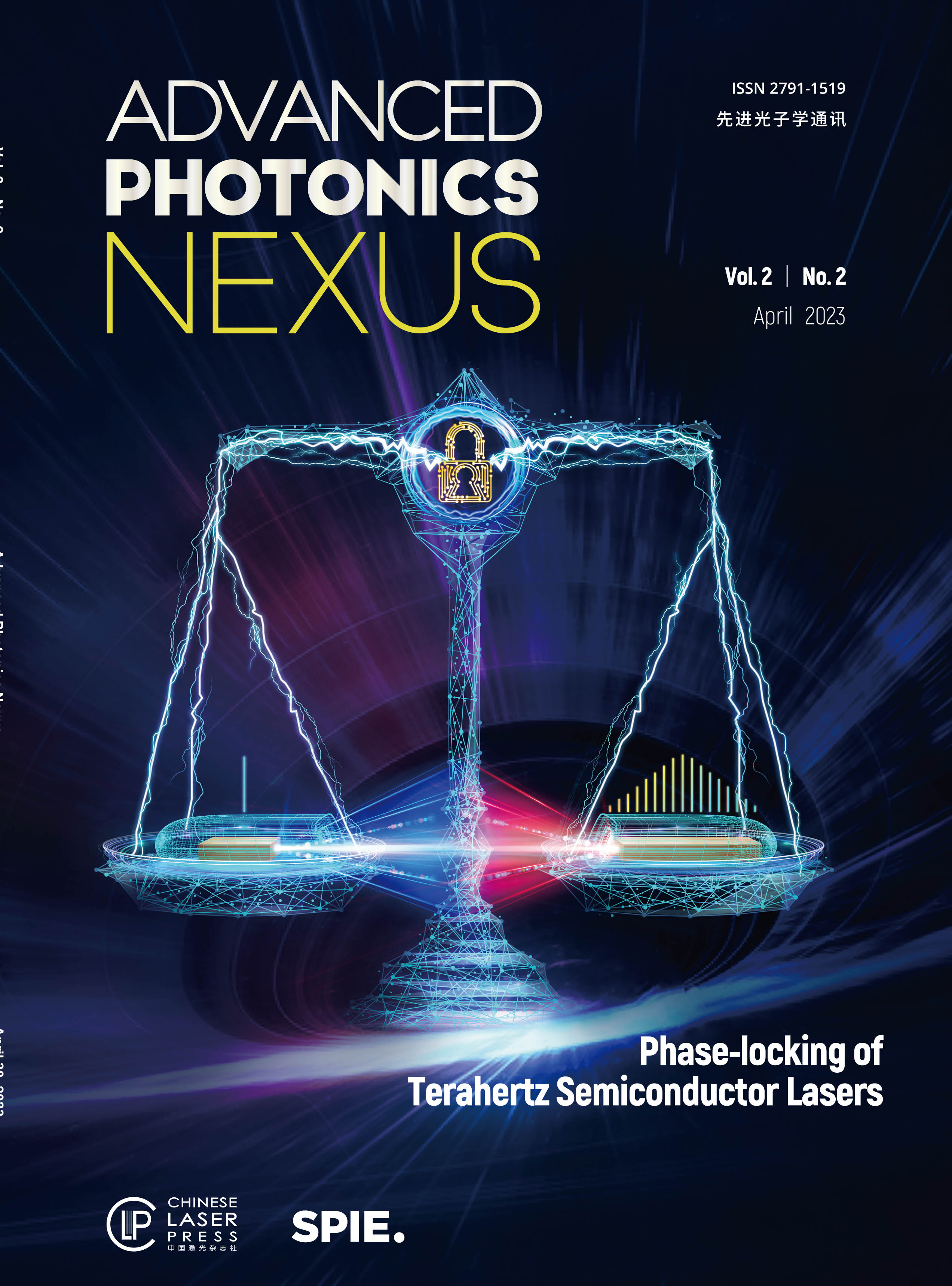Journals >Advanced Photonics Nexus
- Publication Date: Feb. 06, 2023
- Vol. 2, Issue 2, 024001 (2023)
- Publication Date: Apr. 06, 2023
- Vol. 2, Issue 2, 024002 (2023)
- Publication Date: Jan. 17, 2023
- Vol. 2, Issue 2, 026001 (2023)
- Publication Date: Jan. 20, 2023
- Vol. 2, Issue 2, 026002 (2023)
- Publication Date: Feb. 02, 2023
- Vol. 2, Issue 2, 026003 (2023)
- Publication Date: Feb. 11, 2023
- Vol. 2, Issue 2, 026004 (2023)
- Publication Date: Feb. 24, 2023
- Vol. 2, Issue 2, 026005 (2023)
- Publication Date: Feb. 24, 2023
- Vol. 2, Issue 2, 026006 (2023)
Achieving valley pseudospin with large polarization is crucial in the implementation of quantum information applications. Transition metal dichalcogenides (TMDC) with different phase structures provide an ideal platform for valley modulation. The valley splitting has been achieved in hybrid phase WSe2, while its valley polarization remains unstudied. Magnetic field controllable valley polarization is explored in WSe2 with coexistence of H and T phases by an all-optical route. A record high valley polarization of 58.3% is acquired with a 19.9% T phase concentration under a 4-T magnetic field and nonresonant excitation. The enhanced valley polarization is dependent on the phase component and shows various increasing slopes, owing to the synergy between the T phase WSe2 and the magnetic field. The magnetic field controlled local magnetic momentums are revealed as the mechanism for the large valley polarization in H / T-WSe2. This speculation is also verified by theoretical simulations of the nonequilibrium spin density. These results display a considerable valley magnetic response in phase-engineered TMDC and provide a large-scale scheme for valley polarization applications.
.- Publication Date: Mar. 02, 2023
- Vol. 2, Issue 2, 026007 (2023)
- Publication Date: Mar. 07, 2023
- Vol. 2, Issue 2, 026008 (2023)
The explosive growth of information urgently requires extending the capacity of optical communication and information processing. Orbital-angular-momentum-based mode division multiplexing (MDM) is recognized as the most promising technique to improve the bandwidth of a single fiber. To make it compatible with the dominant wavelength division multiplexing (WDM), broadband equal high-efficient phase encoding is highly pursued. Here, we propose a twisted-liquid-crystal and rear-mirror-based design for ultrabroadband reflective planar optics. The backtracking of the light inside the twisted birefringent medium leads to an achromatic phase modulation. With this design, a single-twisted reflective q-plate is demonstrated to convert a white beam to a polychromatic optical vortex. Jones calculus and vector beam characterization are carried out to analyze the broadband phase compensation. A dual-twisted configuration further extends the working band to over 600 nm. It supplies an ultrabroadband and reflective solution for the WDM/MDM-compatible elements and may significantly promote advances in ultrabroadband planar optics.
.- Publication Date: Mar. 14, 2023
- Vol. 2, Issue 2, 026009 (2023)
- Publication Date: Mar. 20, 2023
- Vol. 2, Issue 2, 026010 (2023)
- Publication Date: Mar. 28, 2023
- Vol. 2, Issue 2, 026011 (2023)
About the Cover
The image on the cover schematically illustrates that by implementing a relative phase-locking method, the long-term stability of a single mode QCL and a QCL frequency comb can be quantitatively compared.












